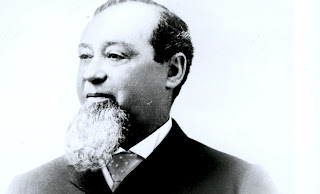Levi Strauss: The Fabric of American Culture
In the tapestry of American history, few threads are as colorful and enduring as the story of Levi Strauss and the iconic blue jeans that bear his name. Born in Buttenheim, Bavaria, in 1829, Levi Strauss emigrated to the United States in 1847, a young man destined to weave his mark into the fabric of American culture.
Levi's odyssey began in New York, where he joined his brothers in the family's dry goods business. However, the siren call of the California Gold Rush eventually drew him westward in 1853. With a vision tinted with the golden hues of opportunity, Strauss moved to San Francisco, a burgeoning hub for the gold rush dreamers and a fertile ground for a savvy businessman.
It was in San Francisco that Levi Strauss stitched his name into history. The genesis of the blue jeans traces back to a serendipitous partnership with tailor Jacob Davis. In 1873, they patented a process that would revolutionize workwear: reinforcing pants with metal rivets at points of strain. This innovation was born out of necessity, crafted for the rugged miners whose daily grind demanded durable attire.
The material of choice was denim, dyed with indigo to mask dirt and wear, creating the blueprint for the modern "blue jeans." This utilitarian garment was initially a practical solution for miners and laborers, but its impact would ripple through generations.
Accepting Strauss's jeans by miners, farmers, and workers was not just enthusiastic but transformative. These were not merely pants but a testament to durability and reliability in the face of the harsh realities of frontier life. The riveted jeans became an essential tool of the trade, as indispensable as the pickaxes and shovels that unearthed the wealth of the West.
Levi Strauss's invention transcended its workwear origins, embedding itself into the very warp and weft of American culture. Through the decades, jeans evolved from the uniform of the working class to a symbol of rebellion worn by the likes of James Dean and Marlon Brando. In the 1960s and 70s, they became the banner of youth culture, peace, and love. Today, they are a universal staple worn by presidents, pop stars, farmers, and fashionistas.
The impact of Levi Strauss's jeans on American culture is profound and multifaceted. They are a democratic garment, embodying the American ideals of equality and freedom. In every thread, they carry the story of innovation, of the American Dream woven into a pair of pants that has stood the test of time.
Levi Strauss passed away in 1902, but his legacy stretches far beyond the gold fields of California. His invention has become an indelible part of American identity, a cultural artifact representing resilience, innovation, and the endless pursuit of the horizon. In the fabric of Levi's jeans, we find the story of America itself—rugged, enduring, and forever in style.
As we reflect on the journey of Levi Strauss and his iconic blue jeans, we are reminded of the power of simple ideas to change the world. In the threads of denim, we see not just the material but the spirit of a nation: adaptable, enduring, and woven with dreams of a better life. Levi Strauss's jeans are more than just clothing; they are a canvas of American history, painted in indigo blue.



Comments
Post a Comment